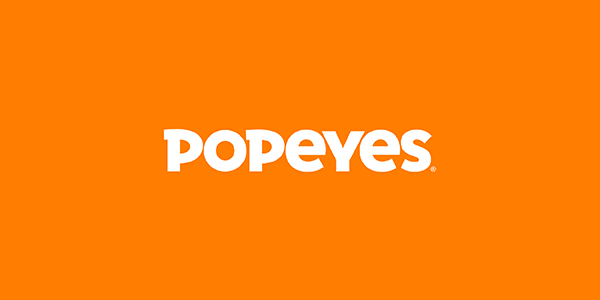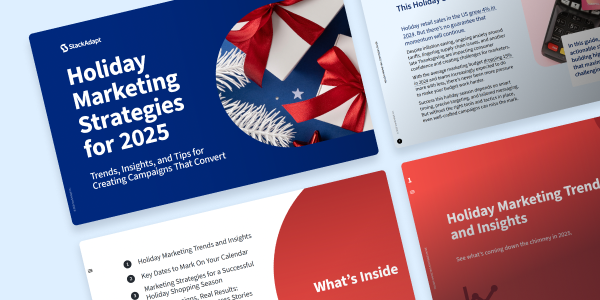What Is 1st-Party Data? Definition, Benefits, and How to Use It

TL;DR: Understanding 1st-Party Data
- First-party data is information collected directly from your audience through owned channels like websites, CRMs, or email platforms.
- It’s accurate, privacy-compliant, and ideal for segmentation, personalization, and campaign optimization.
- Marketers can use it to build lookalike audiences, retarget customers, and improve cross-channel attribution.
- First-party data helps tie online campaigns to real-world outcomes, such as purchases, registrations, or event attendance, for more accurate measurement and performance tracking.
Businesses have long relied on 3rd-party cookies to track users across the web, gather information about their browsing behaviour, and inform their marketing strategies. But in today’s digital advertising landscape, 1st-party data is becoming increasingly relevant.
With increased privacy regulations, such as GDPR and CCPA, and the ongoing transition towards cookieless advertising, relying solely on 3rd-party cookies is no longer sustainable.
As of February 2025, 19 states in the US have passed privacy laws that limit the use of 3rd-party tracking, and 90% of US browsers are expected to become entirely cookieless in the years ahead.
That’s why marketers need compliant ways to reach and understand their customers. Those that don’t adapt will struggle to target their audiences effectively and remain competitive in the cookieless future.
That’s where 1st-party data comes in.
Read on to learn what 1st-party data is, how to collect it, and the benefits of using it in your digital marketing campaigns.
What Is 1st-Party Data?
First-party data is information an organization collects directly from its audience through interactions on its own channels. It’s gathered from engaged, consenting users who have a direct relationship or familiarity with a brand, its products, or services.
Unlike other types of data, 1st-party data is often considered more accurate and reliable because it’s collected from users who are already engaged with your brand. This allows for more personalized, engaging customer experiences and marketing campaigns while ensuring compliance with privacy regulations.
Because of this, it’s no surprise that a 2024 survey found that 80% of marketers cited 1st-party data as the top asset they planned to leverage as they transition to the cookieless future.
What Are Examples of 1st-Party Data?
According to a 2024 study by Ad Age and Signet Research, commissioned by StackAdapt, 42% of marketers cited their lack of 1st-party data as the top reason for not using it.
First-party data can take many forms and be collected through various sources. Here are some of the most common examples of 1st-party data and the methods used to capture it:
Website Interactions
These interactions are typically tracked using 1st-party cookies or pixels embedded directly on your website, capturing behaviours such as page views, clicks, scrolling patterns, abandoned carts, preferred products or categories, search queries on a site, and the types of content viewed or downloaded.
Email Marketing
First-party data gathered from email campaigns commonly includes email open rates, click-through rates, newsletter signups, subscriber preferences (such as preferred marketing materials or content topics), demographic details collected via surveys (for example, age, employment, education, and marital status), and the types of gated content they engaged with (such as whitepapers, case studies, or guides).
CRM & Transactional Data
CRM systems often store valuable 1st-party data, including individual product purchase history, purchase frequency, subscription and membership statuses, successful cross-sells and upsells, overall purchase value, demographic and interest data, and support ticket resolution history.
Social Media Engagement
Brands collect 1st-party data through engagement on their owned social media channels. Examples include likes, comments, shares, and direct messages, as well as the platforms customers prefer or most actively use when interacting with a brand’s content.
Offline Interactions
Offline 1st-party data includes in-store purchases linked to loyalty or rewards programs (such as membership tiers), use of coupons (including frequency and types of coupons a customer typically uses), event attendance, and customer interactions with support or sales representatives (when digitized through call logs or CRM integration).
How Is 1st-Party Data Stored?
First-party data is stored in various specialized marketing and data-management systems, including:
- CRMs: Store customer-related data, including contact information, purchase history, and preferences in a centralized, structured database.
- Customer Data Platforms (CDPs): Unify and organize customer data from various sources, including online and offline interactions, to create a single customer view and enable personalized marketing.
- Marketing Data Clouds: Provide scalable and flexible options for governing, storing, collaborating, managing, analyzing, and monetizing 1st-party data.
According to Deloitte’s Fall 2024 CMO Survey, breaking down internal barriers between adtech and martech is one of the most important strategies for getting the most out of 1st-party data, with nearly a third of companies investing in CDPs and reducing internal data silos to improve data hygiene, activate their 1st-party data for omnichannel campaigns, and understand the customer journey more clearly.
StackAdapt’s new Data Hub centralizes 1st-party data from CRMs and other sources, segmenting high-intent audiences, activating data across programmatic channels, and providing a unified view of the customer journey—all without relying on 3rd-party cookies.
To learn more, read on or scroll to the bottom of the page.
What’s the Difference Between Zero, 1st, 2nd, and 3rd-Party Data?
Understanding the differences between the four main types of audience data can help marketers personalize campaigns, stay compliant, and drive better results.
Here’s a quick breakdown of what sets them apart:
Zero-Party Data vs. 1st-Party Data
Zero-party data refers to information that users voluntarily and intentionally share with a brand, typically through direct engagement. Examples of zero-party data include preference center selections, survey responses, and profile details that users willingly provide through forms, quizzes, or account settings.
Unlike 1st-party data, zero-party data is explicitly provided by users rather than being observed or inferred from their behaviour on websites or apps.
First-Party Data vs. 2nd-Party Data
Second-party data is 1st-party data that comes from another source—such as a trusted partner—rather than directly through your own channels or interactions.
For example, a hotel chain might obtain data from an airline partner about travellers’ booking preferences or loyalty program status to improve joint marketing efforts or provide more personalized offers and experiences.
One of the benefits of 2nd-party data is that it extends your audience insights beyond your own interactions, allowing you to reach new clients or identify new customer segments that share similar interests or characteristics with your existing customers.
First-Party Data vs. 3rd-Party Data
Third-party data refers to information collected by external organizations or data providers, rather than directly from your own customers or channels. It’s typically aggregated from various sources and sold or licensed to brands for marketing purposes.
Unlike 1st-party data or 2nd-party data, 3rd-party data is often perceived as less reliable and accurate because it’s collected indirectly, potentially making it less relevant, incomplete, or outdated, depending on your industry, audience, or campaign goals.
That said, 3rd-party data can help expand your reach, particularly if you have limited access to 1st-party data or are looking to scale campaigns quickly into new markets.
Here’s a comparison table that breaks down the differences between zero, 1st, 2nd, and 3rd-party data at a glance:
| Zero-Party Data | 1st-Party Data | 2nd-Party Data | 3rd-Party Data | |
| Definition | Data shared by users directly with your brand. | Data sets that are proprietary to you. | Data obtained from a trusted partner. | Data that’s aggregated and acquired from other sources. |
| How It’s Collected | Provided through surveys, quizzes, account profiles, etc. | Collected directly from interactions on your channels. | Shared through partnerships with companies. | Collected by companies that don’t have a direct relationship with your customers. |
| Examples | Preference center selections, quiz answers, and user profile details. | Data from websites, surveys, apps, social media platforms, emails, and analytics. | Data provided by a partner (e.g., an airline shares traveller preferences with a partner). | Demographic or behavioural data purchased from a data marketplace. |
| Data Usage | Used to personalize customer experiences and create targeted campaigns. | Used to improve audience targeting and measure campaigns. | Used to create targeted joint campaigns or extend reach into new segments. | Used to broaden audience reach and scale marketing efforts. |
Why Is 1st-Party Data Important?
With privacy regulations tightening and 3rd-party cookies slowly being phased out, marketers are seeking more reliable and compliant ways to understand their audience and target potential customers.
First-party data helps brands navigate this shift by offering privacy-friendly insights gathered directly from customers and prospects.
Here are some of the main benefits of 1st-party data:
- Accurate, reliable insights: Because 1st-party data comes directly from your interactions with customers, it’s highly accurate, relevant, and timely, giving you a clearer view of real user intent and behaviour.
- Precise personalization: First-party data helps you personalize customer experiences with a higher degree of precision than 3rd-party data. For example, you can deliver customized product recommendations and targeted ads based on a user’s browsing history or past purchases.
- Lower acquisition costs: Because 1st-party data enhances targeting effectiveness, studies have shown that marketers can reduce customer acquisition costs by up to 50%.
- Higher ROI: According to a study by Google and the Boston Consulting Group, businesses that leveraged 1st-party data for their marketing campaigns saw a 2.9 times increase in revenue lift compared to companies relying on other data sources.
- Competitive advantage: Unlike other types of data, 1st-party data is collected directly from interactions with your brand and can’t be accessed or replicated by other businesses or competitors, helping you provide more relevant and unique customer experiences and offers.
- Marketing resilience: Due to the ongoing deprecation of 3rd-party cookies, 89% of US brands and agencies have reported an impact on their personalization efforts. First-party data ensures your marketing remains resilient and compliant, even as privacy restrictions evolve.
- Cross-channel reach: First-party data can be activated seamlessly across multiple touchpoints and channels, from popular programmatic advertising channels like display and connected TV to more traditional formats like email, helping you reach audiences consistently and optimize engagement across the entire customer journey.
- Behaviour-based retargeting: First-party data allows you to retarget users based on their interests or past behaviours. For example, StackAdapt’s retargeting solutions allow you to serve personalized ads or emails to users who abandoned their cart while on your website, encouraging them to complete their purchase by reminding them of specific items they previously showed interest in.
- AI-driven optimization: First-party data enhances the effectiveness of AI-driven predictive analytics for product recommendations and audience targeting. For example, you can use dynamic creative optimization to automatically tailor ad creatives and messaging, improving campaign performance.
How to Use 1st-Party Data in Marketing Campaigns
First-party data is only valuable if you know how to use it. From strategy and execution to expanding reach and measuring performance, here are five practical ways you can put 1st-party data to work in your marketing campaigns.
1. Build Detailed Customer Profiles
Customer profiles summarize key demographic and behavioural attributes of your target audience. These profiles help guide your digital marketing strategy by aligning messaging, creative, and targeting with the specific wants and needs of your customer segments.
First-party data is critical for building accurate customer profiles because it captures authentic customer preferences and behaviours directly from real interactions across your owned channels—whether it’s purchase history, browsing activity, or engagement with ads or email marketing campaigns—into a single, unified view.
In doing so, it provides you with trustworthy, high-quality insights that power better customer segmentation and more effective audience targeting.
2. Personalize Your Campaigns
Personalized marketing means delivering messages tailored to specific individuals or audience segments based on their interests, intentions, or stage in the customer journey.
Leveraging 1st-party data allows you to analyze past purchases, browsing history, and personal preferences to understand and predict what your audience truly wants, helping you create highly relevant campaigns that resonate across every touchpoint.
For example, let’s say you’re an e-commerce beauty brand. If a user recently browsed skincare products on your website but didn’t make a purchase, you could use 1st-party data to dynamically retarget them with personalized ads showcasing complementary products, customer reviews, or limited-time offers.
This tailored messaging, driven by real customer insights and audience segmentation, can boost relevance and engagement, ultimately leading to higher conversions.
3. Leverage 1st-Party Data for Retargeting
Because first-party data reveals important information on audience behaviours, traits, preferences, and interests, it can be effectively used as a bottom-funnel tactic to generate further conversions.
Once a customer has converted online, 1st-party data can be uploaded into your demand-side platform (DSP) and leveraged for retargeting campaigns.
You can use CRM data to retarget with complementary products, such as a smartphone case for a recent mobile phone purchase, or matching gloves following the recent purchase of a coat or hat.
With StackAdapt’s new martech offering, marketers can also trigger personalized email retargeting campaigns using CRM data. For example, a CPG brand could send a coupon for items recently abandoned in their cart, encouraging them to complete a purchase at a discounted price. Similarly, a B2B brand could send follow-up content, such as a product comparison guide or ROI calculator, to a prospect who recently downloaded a whitepaper to help move them further down the funnel.
4. Build Lookalike Audiences
Reaching new customers can be challenging. But using data about your existing audience can help you find and target prospects with similar characteristics to expand your reach.
Marketers can use 1st-party data to build lookalike audiences based on the shared traits, behaviours, and interests of your highest-performing customers.
Analyzing key attributes of your best customer segments—such as purchase patterns, the types of content they engage with, or specific demographic indicators—can help you identify and engage with new customers who are more likely to convert. This approach helps you efficiently scale your campaigns and reach high-value prospects while maintaining ad relevance and boosting performance.
5. Tie Conversions Back to Your Digital Campaigns
First-party data is a valuable asset for attribution because it captures real actions specific to your brand, both online and offline.
Using cross-channel attribution, you can directly connect conversions—such as voter registrations, travel bookings, or in-store product purchases—to the digital touchpoints that influenced them.
This allows you to accurately measure return on ad spend, demonstrate your campaign’s real-world impact, and optimize your marketing strategies for greater efficiency, maximizing budget performance while closing the loop between digital engagement and offline results to get a more holistic view of campaign effectiveness.
Get Started With 1st-Party Data
The evolving privacy landscape has highlighted the growing importance of 1st-party data. Marketers are quickly realizing its benefits, especially in an increasingly competitive digital landscape.
With StackAdapt, you can centralize and activate your 1st-party data in one unified platform, seamlessly combining your programmatic and email marketing efforts to target audiences, measure cross-channel performance, and deliver personalized campaigns with more precision—all while ensuring privacy and regulatory compliance.
Request a demo to learn more about leveraging 1st-party data in your StackAdapt campaigns.
First-Party Data FAQs
First-party data is also sometimes referred to as owned data, proprietary data, in-house data, or customer data. These terms all highlight that the data is collected directly by a company through its own interactions with users instead of coming from external sources.
Marketers activate 1st-party data by syncing it with DSPs, CDPs, or CRMs to create audience segments and run targeted campaigns. This allows them to use customer data across channels like display, native, CTV, or email to improve ad relevance, increase engagement, and drive better campaign performance.
According to a 2024 Salesforce study, the top methods marketers use to collect 1st-party data are customer service data, mobile apps, transaction data, web registration or account creation, loyalty programs, subscriptions, online learning platforms, and by providing discounts on products or services.






